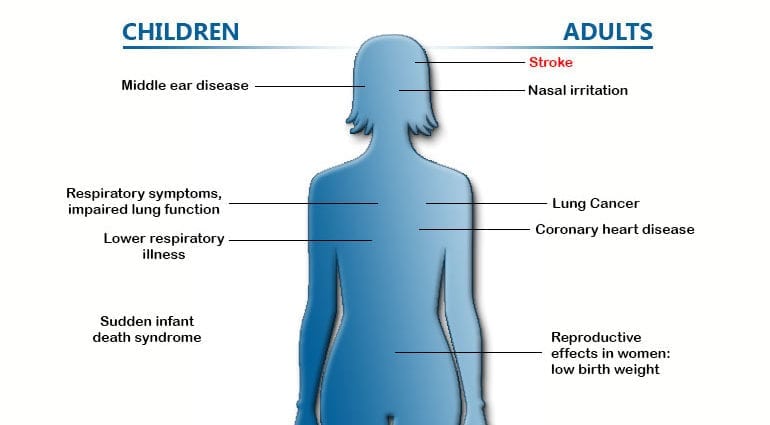I used to think that non-smokers who actively express their negative attitude towards smoking are just arrogant and intolerant individuals, and I myself never stopped smoking friends in my presence. If an adult decides to spoil his health – this is his decision, I will not defiantly brush off the smoke of his cigarette. Recently, however, my attitude has changed dramatically, and I am glad that a law banning smoking in public places came into force in Russia last summer.
This law, which was passed almost two years ago, completely bans smoking in all indoor public places – in accordance with the WHO Framework Convention on Tobacco Control. He caused a lot of controversy and opposition, but I am convinced that he can only be welcomed. I was very glad that the restaurants finally stopped smoking !!!
The fact is that these measures are really very important for MY health, even though I do not smoke. As I recently learned in my next toxicology course, the effects of smoking on a second-hand smoker are not much better than on a smoker. A similar law is in effect, for example, in the state of New York *, and it has already borne fruit, which I will discuss below. In the meantime, a few details about tobacco smoke.
* The Indoor Air Cleanliness Act is a comprehensive New York State law that was enacted on July 24, 2003 to ban tobacco smoking in most public and private enclosed work areas, including bars, restaurants and bowling alleys. The law was passed to reduce the impact of secondhand smoke on non-smokers and people who work in service establishments.
Tobacco smoke is a complex mixture of chemicals, tar, and various toxic gases. It contains more than 7000 chemicals, 70 of which have been proven to cause cancer. Many of these chemicals also cause heart disease and lung problems that can be fatal.
The smoke exhaled by the smoker (in picture # 2) combines with side smoke (smoke from a burning tobacco mixture that is not inhaled – in picture # 1) and smoke from the combustion of the outside of the cigarette (in picture # 3), and all this goes into the air we breathe. This is how we become passive smokers.
Most of the chemicals contained in tobacco smoke are released (surprisingly) with sidestream smoke (see table). For example, there is 2-3 times more nicotine in sidestream smoke than in mainstream smoke that is exhaled by a smoker. And nicotine is a drug that causes addiction to smoking.
The impact of secondhand smoke on non-smokers is measurable. And it can be significantly reduced.
I was impressed by the data I heard in a lecture at the Bloomberg School of Public Health. Kenneth M. Aldous, director of environmental and health sciences at the Wadsworth Center, New York City Department of Health, spoke of two studies that looked at secondhand smoke.
The study authors had to find out how effective New York State’s smoke-free legislation is, more specifically how the ban affects nonsmoking cotinine levels. It was this chemical in human saliva and blood that served as a biomarker for measuring exposure to tobacco smoke.
The first study assessed the impact of the state’s no-smoking law on restaurant workers, involving 104 such workers and nearly 1600 more residents in the state.
For nonsmoking workers in service establishments, the level of cotinine for the 12 months of the ban on smoking decreased compared to the values observed before the ban was introduced, from 3,6 to 0,8. This confirms the high efficiency of this ban. And among the general population, salivary cotinine dropped by 47% over the same period.
The second study was conducted in New York City itself in 2007 as part of the National Health and Nutrition Survey. It was attended by nearly 1800 people. In the course of the study, it was calculated that this law helped to prevent approximately 4000 hospitalizations due to heart attack within the first year after its adoption, resulting in, among other things, cut New Yorkers’ health care costs by about $ 56 million.
This and a large number of other studies around the world confirm how important it is for human health to reduce the exposure to secondhand smoke. With the advent of such laws, our life becomes better, may smokers forgive me :)))
If you still smoke, but want to quit so as not to be like Carrie :))), read my article for tips on how to do it.










